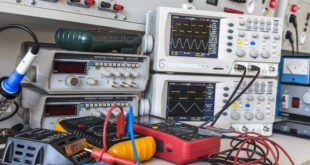China has achieved a technological breakthrough that could help introduce pulse weapons to the People’s Liberation Army’s arsenal, reports the Global Times, a tabloid under the auspices of the Communist Party mouthpiece People’s Daily.
According to the report, the Xian Institute of Optics and Precision Mechanics of the Chinese Academy of Sciences has successfully developed a third-generation X-ray pulsar simulation source. The technology, which can create an X-ray pulsar source in X-ray tubes to generate arbitrary waveform pulses, officially passed evaluation tests on Jan. 17. Simulated X-ray pulsars may help China develop new weapons that can challenge America’s dominance in the electromagnetic pulse (EMP) weapons sphere. Nothing more specific is provided in the release.
Some reports have interpreted it to be non-nuclear EMPs kind of weapon that produces a an instantaneous burst of high power energy that couples on to electrical lines, telecommunication lines, and other metallic paths into a facility. It is reported During the 1991 Gulf War, the US carried and used EMP weapons on its E-8 Joint Stars aircraft to disrupt electronic command systems, which international analysts believe was one of the main advantages the US had over its enemy. In March 1999, the US used microwave weapons during the NATO bombing of Yugoslavia, causing communication in certain areas to be disrupted for more than three hours. EMP weapons were then used to sever Iraqi state television broadcast signals in March 2003 during the Iraq War.
Recently In a 2012 test, a Boeing CHAMP (Counter-Electronics High-Power Advanced Missile Project) missile successfully disabled the electronics in a two-story building by firing high power microwaves. Every PC inside went dark within seconds, as did the building’s entire electrical system. The test was so successful that it also disabled cameras recording the event. Over the course of one hour, the missile knocked out electrical systems at seven selectively targeted buildings with little or no collateral damage.
However, above EMP weapons are of the ultra wideband type that generate high power narrow pulse fields, with pulse widths narrower than 100 ps,which may be repetitively pulsed up to 1 million pulses per second. The frequency content in these weapons is typically up to 3 Ghz, not X-Band. Therefore the weapon appears to be narrowband type that generates pulsed CW waveforms in the gigahertz range with pulse widths of the order of microseconds. The narrow-band devices radiate energy concentrated in a small frequency band typically within one percent of the central frequency.
X-ray Beam weapons were first researched by Nazi Germany in the later phases of World War II. Nazi. They were developed under Heinz Schmellenmeier, Richard Gans and Fritz Houtermans. They built an electron accelerator called Rheotron (invented by Max Steenbeck at Siemens-Schuckert in the 1930s, these were later called Betatrons by the Americans) to generate hard X ray synchrotron beams for the Reichsluftfahrtministerium (RLM). The intent was to pre-ionize ignition in Aircraft engines and hence serve as anti-aircraft DEW and bring planes down.
The Next significant X-Ray Laser Program was launched by US in 1980s, stimulated by a vision of a laser system that could provide strategic defense against Soviet missiles. The initial X-Ray laser (XRL) design concept was referred to as “Excalibur” contributed by the Strategic Defense Initiative Organization to the DoE effort during fiscal years 1985 to 1992.
The source developed by Chinese Academy of Sciences appears to be free-electron laser (FEL), a type of laser that uses very-high-speed electrons that move freely through a magnetic structure, hence the term free electron as the lasing medium. The free-electron laser has the widest frequency range of any laser type, and can be widely tunable, currently ranging in wavelength from microwaves, through terahertz radiation and infrared, to the visible spectrum, ultraviolet, and X-ray.
FEL technology is also being evaluated by the US Navy as a candidate for an antiaircraft and missile directed-energy weapon. The Thomas Jefferson National Accelerator Facility’s FEL has demonstrated over 14 kW power output. Compact multi-megawatt class FEL weapons are undergoing research. On June 9, 2009 the Office of Naval Research announced it had awarded Raytheon a contract to develop a 100 kW experimental FEL. On March 18, 2010 Boeing Directed Energy Systems announced the completion of an initial design for U.S. Naval use. A prototype FEL system was demonstrated, with a full-power prototype scheduled by 2018.
Last year United States military, is reported to have developed an X-ray gun that can see through fabric, rubber and aluminum to find drugs, money, explosive liquids and even people. This X-ray gun is of the size of a breadbox and works with the press of a button, can be held by a soldier in his hands.
 International Defense Security & Technology Your trusted Source for News, Research and Analysis
International Defense Security & Technology Your trusted Source for News, Research and Analysis
